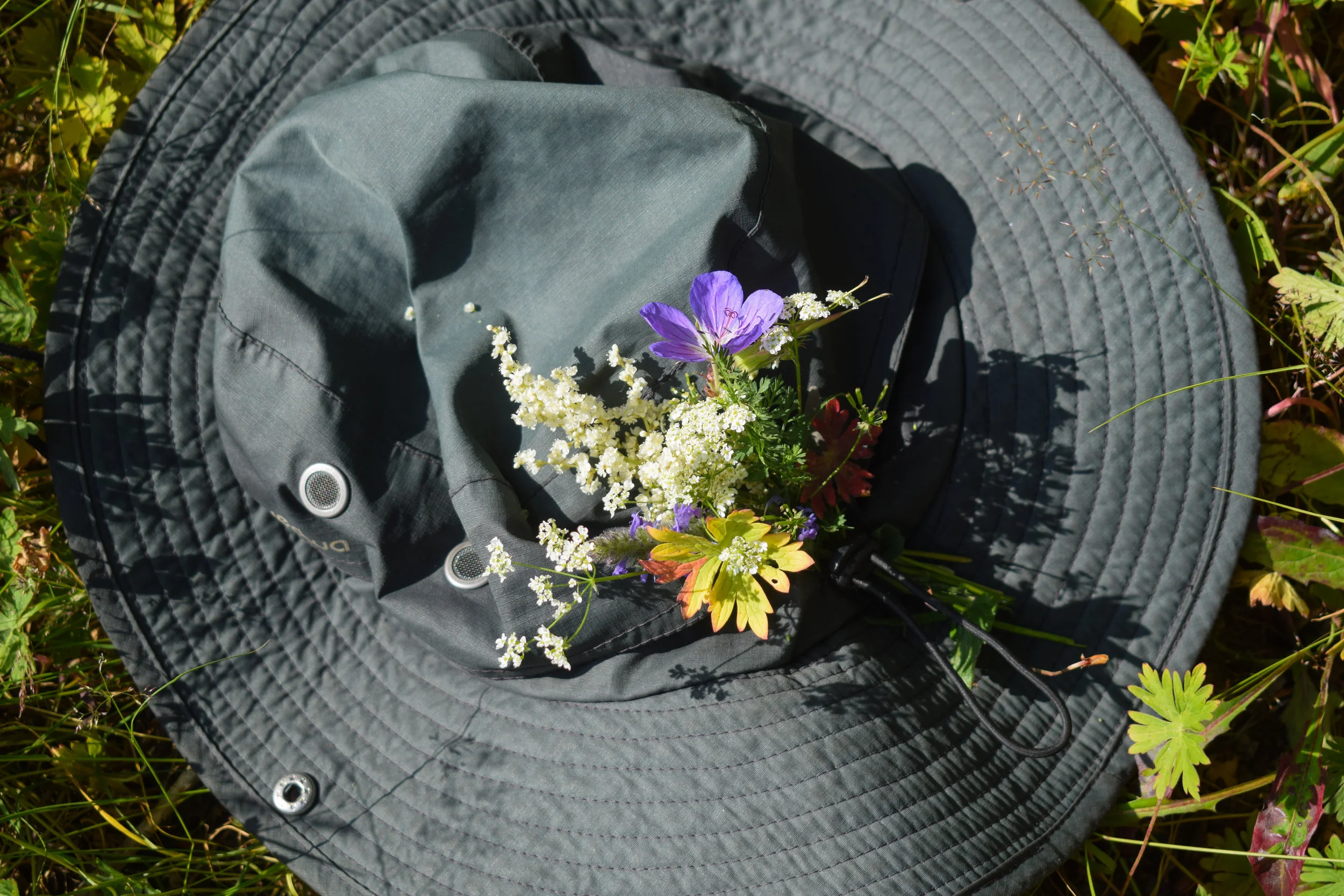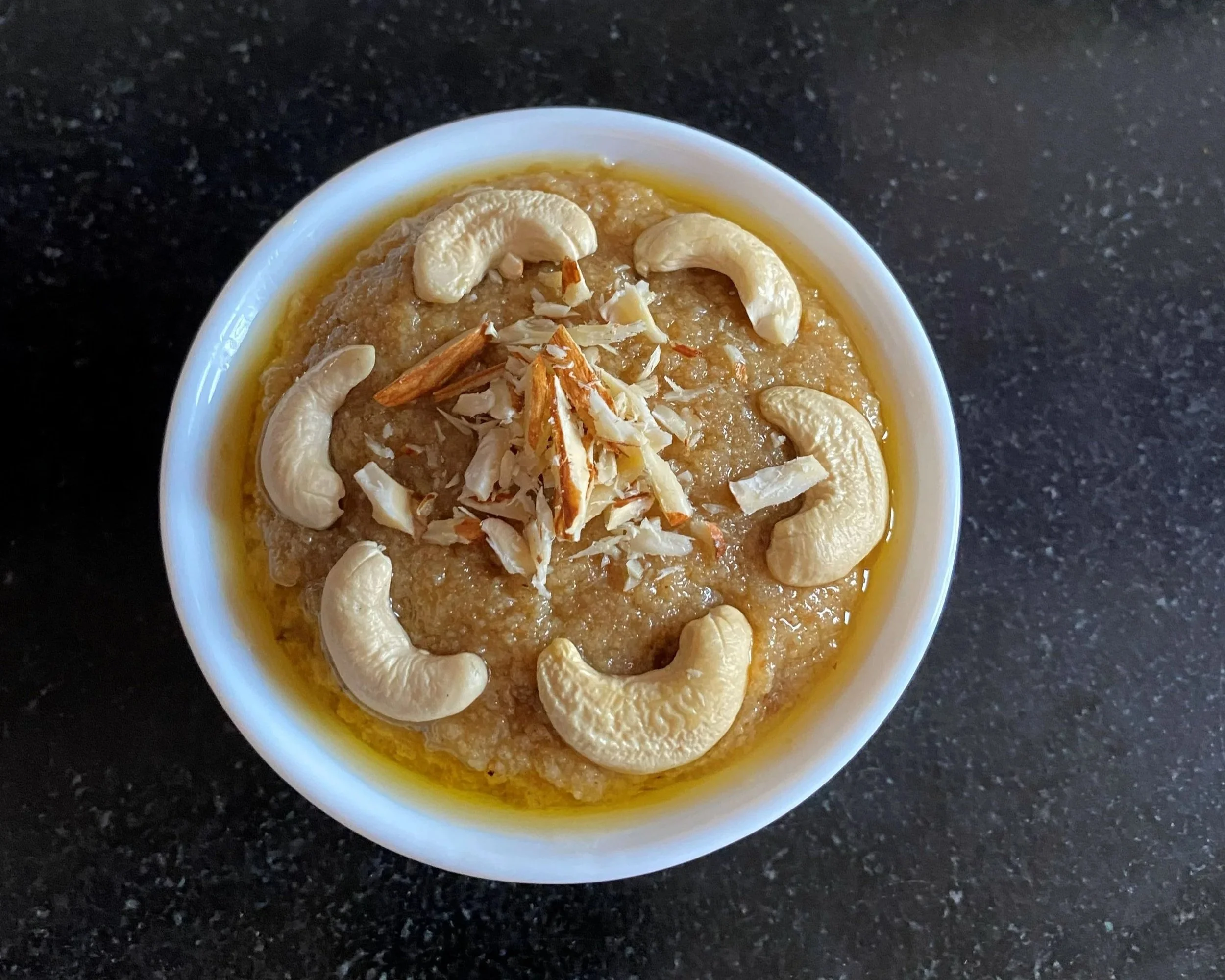The Secret Life of Herbs in the Trans-Himalayas

Ecologist Anisha Jayadevan cooks with the beautiful, otherworldly plants of the Trans-Himalayas.
Finding a spot to light a gas stove in the Trans-Himalayas of Himachal Pradesh is proving to be difficult. It is windy and cold and even small cliff-faces offer little cover to get a flame going. The view around us of treeless, snow-capped peaks is distracting, but our grumbling tummies yank us back to the pressing matter of finding a sheltered spot to cook breakfast. Finally, the only thing that seems to work is positioning the stove between the open doors of our car.
Meanwhile, Arun Kumar, our field botanist has found something. He uproots a potato and points to little shrubs growing by the road with small purple flowers.
“Himalayan thyme,” he says, and plucks some flowers for us to smell.
And so begins our tryst with the beautiful, sometimes otherworldly, plants of the Trans-Himalayas – a vast expanse of arid, high-altitude lands, a continuation of the northerly ranges of the Greater Himalayas.
Mountains carved and weathered by rock, wind, river and glacier
Image credit: Anisha Jayadevan
We pluck some thyme flowers and leaves and sprinkle it over our instant noodles, cooked over the mild, wavering flame of the gas stove. The thyme adds a hint of aroma, hitting taste buds that instant noodles never hit before. The potatoes are saved for later, for a kichadi made next to wild rose bushes with a background score of the roaring river Bhaga.
We briefly wonder how to wash the remains of noodles off the kadai, but Arun has already uprooted some scouring-brush horsetail by a stream. He points to little ridges along the length of its stem. “There’s silica in there which make the stems rough.” It made for a great scrub.
This is how we would be introduced to the high Himalayas on our short research field trip to Ladakh: by smelling, eating and marveling at its plants. It teaches us about the harsh climate and the challenges people face to live here; about ancient trade routes that introduced fodder-plants like Medicago sativa, a variety of alfalfa; about trees that were planted in this barren land to serve as timber; about the warming climate.
To understand Ladakh’s plants, you first need to understand its geography. There is no escaping or ignoring it. It is evident everywhere.
Ladakh is bounded by mountains; the Karakoram Range runs along the north and the Great Himalayan range along the south. The latter intercepts most of the monsoon-laden clouds, leaving the region arid.
The average rainfall in Ladakh is only 102mm (compare this to an average of ~1600mm that Bangalore receives). It rains only about ten days in a year. The bulk of Ladakh’s water needs are met by glacier melt and snow.
The sunlight is harsh and intense. Solar panels installed here could power the whole of Ladakh.
Leontopodium himalayanum, Himalayan edelweiss
We were treated to entire mountain sides swathed in blooms of Nepeta floccosa
There are no forests. Except for some strands of juniper, and planted willow and poplar trees that serve as timber and fuel wood, it has no naturally growing trees either.
Ladakh is a cold desert.
In summer, the temperature soar higher than 30 degrees Celsius. In winter it drops to -40 degrees Celsius. For nearly half the year during winter, the roads that connect Ladakh to the rest of India remain closed.
We are lucky to be here during the narrow window in which climatic conditions are ripe enough for several plants to flower, and we’re treated to entire mountainsides swathed in blooming flowers. Arun points out plants I had only heard of in books, with the most romantic names: forget-me-nots, chamomile, edelweiss, honeysuckle, buttercups.
We also find plants with a bewildering range of adaptations, to survive these extreme climes. Many plants like the cushion plant (I am always tempted to give them a little pat) grow close to the ground in small, compact mats. This protects them from harsh winds, but also increases their chances of being completely covered by snow, which surprisingly, acts like a blanket, insulating them from fluctuating temperatures – much like an igloo. Some plants have hairy and succulent leaves or long roots to help them cope with dry, windy and cold conditions. Or other times, a good strategy is just to take shelter under or close to a plant that is good at trapping heat.
Acantholimon lycopodioides, an example of plants that grow close to the ground to cope with harsh winds
While we drink tea flavoured with wild mint and sniff at silvery bushes of Artemesia that smell unexpectedly of Wrigley’s chewing gum, we also begin to learn about the crops grown in Ladakh, and about changes stirring in the climate and environment.
Ladakh’s long winters mean that there is a very short growing season for crops, from May to September. During the summer months, the locals harvest some of the wild plants and grow crop. Barley and wheat are the staple food crops (chang, a sweet, acidic alcohol made of barley and tsampa; and ground barley flour added to tea, would quickly become favourites), are grown alongside vegetables like turnip, potatoes, carrots and green-leafy vegetables (oh hello, bok choy-stuffed Tibetan momos!). Vegetables and fruits are stored for the winter – when Ladakh is cut off by road from the rest of the country – either by dessicating them or hoarding them in pits in the soil. In recent years, greenhouses and better storage facilities have allowed for an extension of the growing period.
The Himalayan marmot eating wildflowers.
All this may change in the coming years. The rate of warming in the Himalayas is nearly three times higher than the global average. Already, apple and apricot trees, and vegetables like cucumber and pumpkin, are growing at altitudes they previously didn’t.
But the primary source of water – glaciers – is fast drying up. They start melting earlier in the year, leaving the glacier-fed rivers dry just when the farmers need water to sow seeds. Adding to this, erratic rains, increasing tourism, the pressure on farmers to diversify crops and the need to ‘green’ Ladakh, all create undue pressures on the scarce water reserves on the roof of the world.
Ingenuous local inventions like artificial glaciers made with glacier-melt water and stored till the summer months, offer some hope. But the future is not clear for the wild plants of the Trans-Himalayas that captured our imagination, tickled our tastebuds, spiced our tea, and amazed us with their diverse adaptations. They are left with three options: to adapt to changing climates, to track the climate by moving with the help of animals or the wind that can disperse their seeds to more suitable climes, and if not, to die.
Wild rose and foraged potatoes for khichdi.
Anisha Jayadevan is an ecologist. She tries to get more people interested in ecology by writing and getting researchers to talk about their work at public gatherings. You can follow her on Instagram here.
Photos by Arun Kumar.
ALSO ON THE GOYA JOURNAL













